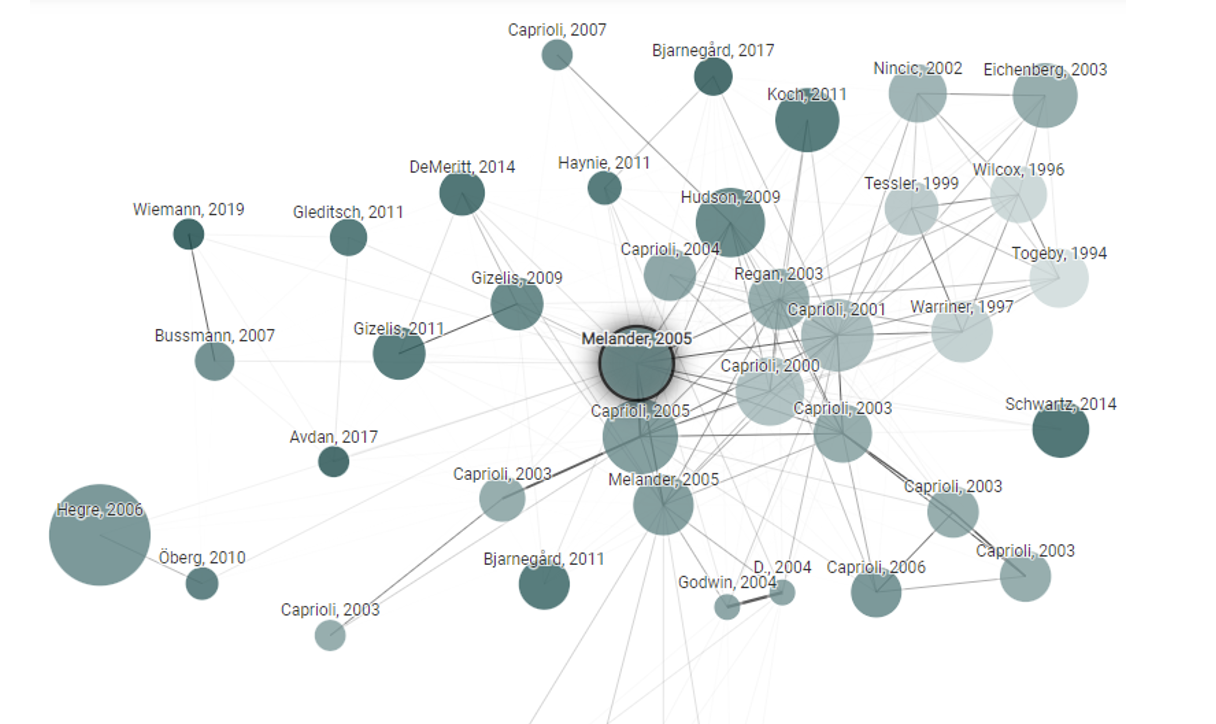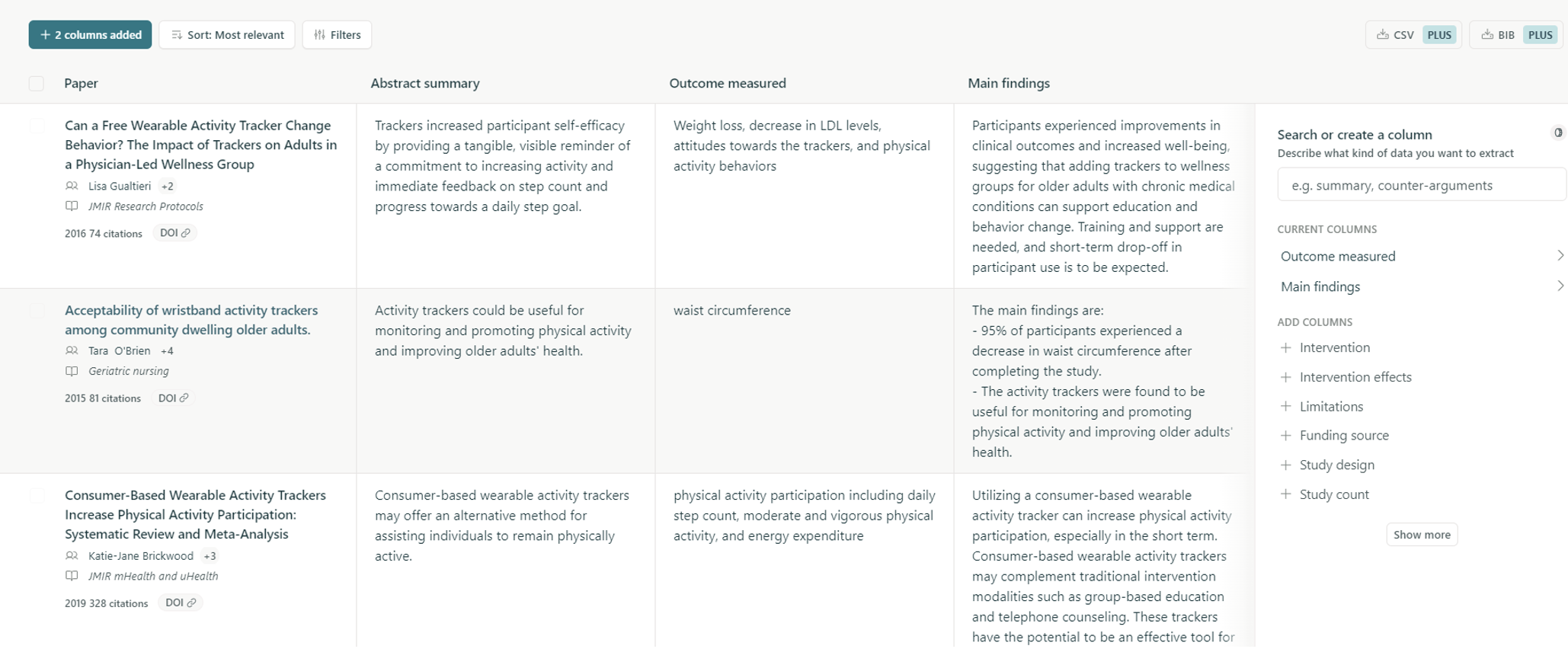Introduction
Searching for relevant and high-quality literature has always been a crucial skill for college students. This proficiency not only allows students to keep abreast of the latest advancements in their respective fields but also to build a solid foundation for their future research projects. Traditionally, students have engaged in manual exploration of online databases, search engines, and specific academic journals to conduct literature searches and identify relevant books and journal articles. In addition, students may also receive instructions on more advanced search techniques, such as employing Boolean operators and citation chaining, to refine search results effectively. While conventional literature search skills remain important, the advent of AI-assisted tools provides a complementary and more efficient approach to the literature search process. These tools typically utilize machine learning algorithms and natural language processing to automate and improve the search process. Integrating these tools can significantly improve the efficiency and efficacy of literature searches. This is particularly helpful for students who are new to their academic fields without a comprehensive understanding of the existing literature.
Generally speaking, there are two categories of AI-assisted tools that students can employ for their literature searches: citation-based tools and text-based tools. Citation-based tools analyze citation patterns and relationships between academic papers, whereas text-based tools use natural language processing and machine learning to enable users to search and retrieve relevant research papers based on text-based queries. Within each of these two categories, a variety of tools are available for students to choose from. The current article will introduce two popular AI-assisted literature search tools: ConnectedPapers (citation-based) and Elicit (text-based). Our objective is to provide the best practices for teaching students to effectively use these tools, along with some useful tips on conducting AI-assisted literature searches in general.
Case Study 1: ConnectedPapers
As its name indicates, ConnectedPapers is a citation-based AI-assisted literature search tool that aims to assist users in exploring connections among various research papers. What distinguishes ConnectedPapers from its competitors is its ability to generate visual graphs that illustrate the relationships between papers based on their citations. This tool is particularly effective when students have a specific research paper (referred to as the "seed paper") in mind and seek to explore other papers that cite similar works found in the seed paper. Once the seed paper is entered into the tool, ConnectedPapers initially confirms the correct paper based on its title and authors. Subsequently, the tool will generate a visual graph that displays the seed paper in the center, surrounded by other relevant papers and citation links. The size of the nodes in the graph represents the impact of each paper, and the color of the nodes conveys information about the publication year of each paper. This visual representation can help students quickly identify the most influential papers in a particular research area and understand the interconnections between different papers.

Figure 1: Sample graph generated by ConnectedPapers
In addition, ConnectedPapers also provides "Prior works" and "Derivative works" associated with each seed paper. The "Prior works" refer to publications preceding the seed paper that have influenced its development, while the "Derivative works" are those that have cited the seed paper and been influenced by it. Together with the visual graph, these supplementary features of ConnectedPapers empower students to swiftly discern the historical context and the impact of a research paper, as well as its influence on subsequent research.
Despite these impressive features, it is equally important to acknowledge the limitations of ConnectedPapers. Students seeking answers to a broader research question may find the information provided by ConnectedPapers disappointing, as the tool focuses primarily on exploring connections between research papers based on the citation network. Therefore, it is imperative to remind students that ConnectedPapers is not a comprehensive literature search tool and should be used in conjunction with other databases and resources.
Case Study 2: Elicit
Elicit is another popular AI-assisted literature search tool designed to help students find relevant research papers based on their specific queries. In contrast to ConnectedPapers, Elicit primarily focuses on text-based searching rather than exploring the interconnectedness of papers through citations. Consequently, students can simply enter keywords or phrases related to their research topic into Elicit without the necessity of preparing a seed paper in advance. Elicit will then generate a list of relevant research papers. Although this may sound similar to other search engines like Google Scholar, Elicit returns results in a table format that includes crucial information such as the title, author(s), abstract, and publication details of each paper. The incorporation of a table significantly facilitates the quick scanning and evaluation of the relevance of each paper for students, eliminating the need to click on individual search results. One of the most impressive features of Elicit is its ability to extract information from the full text of the papers, including research context, number of participants, and snippets of text that are requested by users. Such information can be added as extra columns of the table, which can be sorted and filtered based on specific criteria and exported in other formats for further analysis.

Figure 2: Sample table generated by Elicit
However, it is important to note that Elicit may not encompass all research databases and might not have access to certain paid journals. Therefore, it is advisable to cross-check and supplement the results of an Elicit search with other database searches to ensure comprehensive coverage of relevant research. Moreover, students should also be reminded about the importance of critically evaluating the quality of the information returned by Elicit. Intensive reading is always crucial to properly understand the content of the research papers before citing them in students' work.
Tips for preparing students to conduct AI-assisted literature search
Over the past two years, as we have been instructing postgraduate students on how to utilize AI-assisted literature searches, we have gathered several essential tips to help students prepare for this process.
Firstly, it is vital to explain to students both the advantages and limitations of AI-assisted literature search tools. The media hype and progress in AI technology may foster overly optimistic expectations in students regarding the capabilities of these tools. Therefore, it is important to emphasize that AI-assisted literature search tools like ConnectedPapers and Elicit are powerful aids in the research process, but they cannot completely replace the traditional literature search in its entirety. Meanwhile, students should also be reminded that critical thinking and human judgments are indispensable to ensure the quality and relevance of the information provided by the AI tools.
Secondly, students should receive systematic guidance on how to proficiently employ AI-assisted literature search tools. Students, especially those new to conducting literature searches in English, may feel overwhelmed or uncertain about how to navigate these tools. Therefore, carefully designed demo sessions or tutorials should be delivered to familiarize students with the interfaces and features of AI-assisted literature search tools. During these sessions, students should be taught how to formulate effective search queries, interpret the results generated by the AI tools, and refine their searches based on the initial results.
Conclusion
In summary, teaching students how to conduct AI-assisted literature searches is a valuable skill in today's research world. By providing students with a balanced understanding of the advantages and limitations of AI-assisted literature search tools and offering step-by-step guidance on their effective use, we can empower students to leverage the potential of AI technology in their current studies and prepare them better for the challenges and opportunities they may encounter in their future academic and professional lives.



